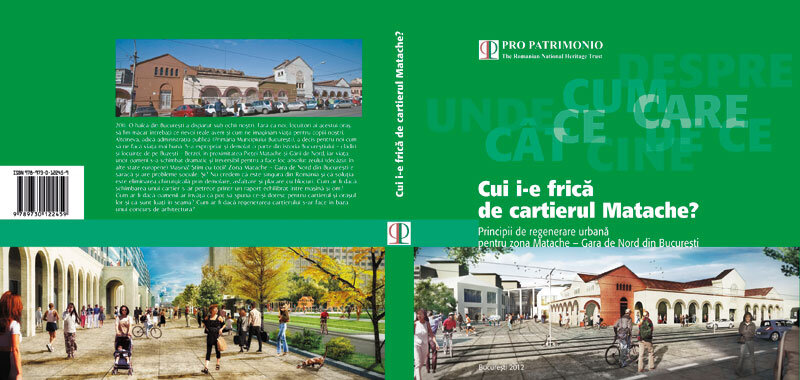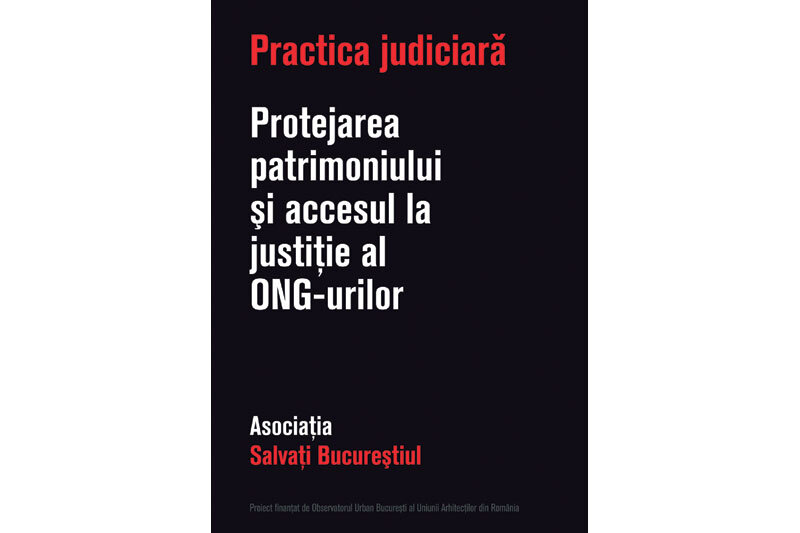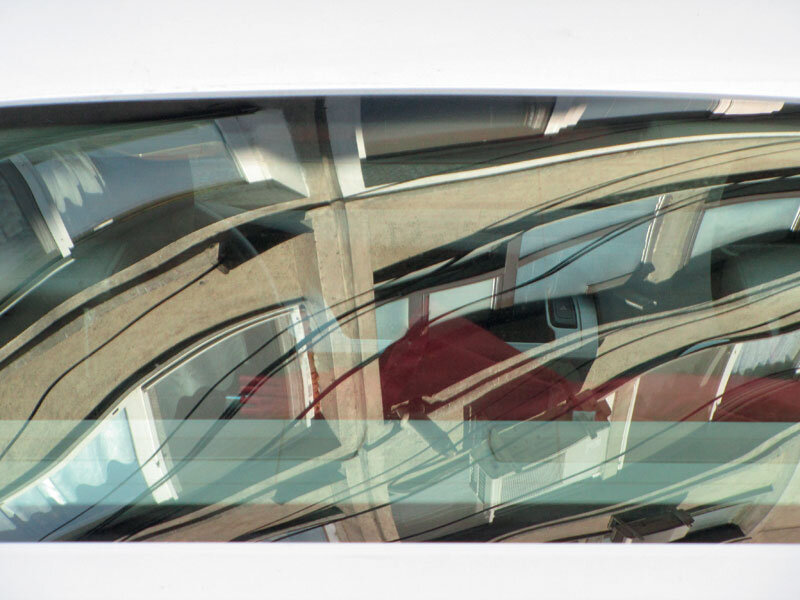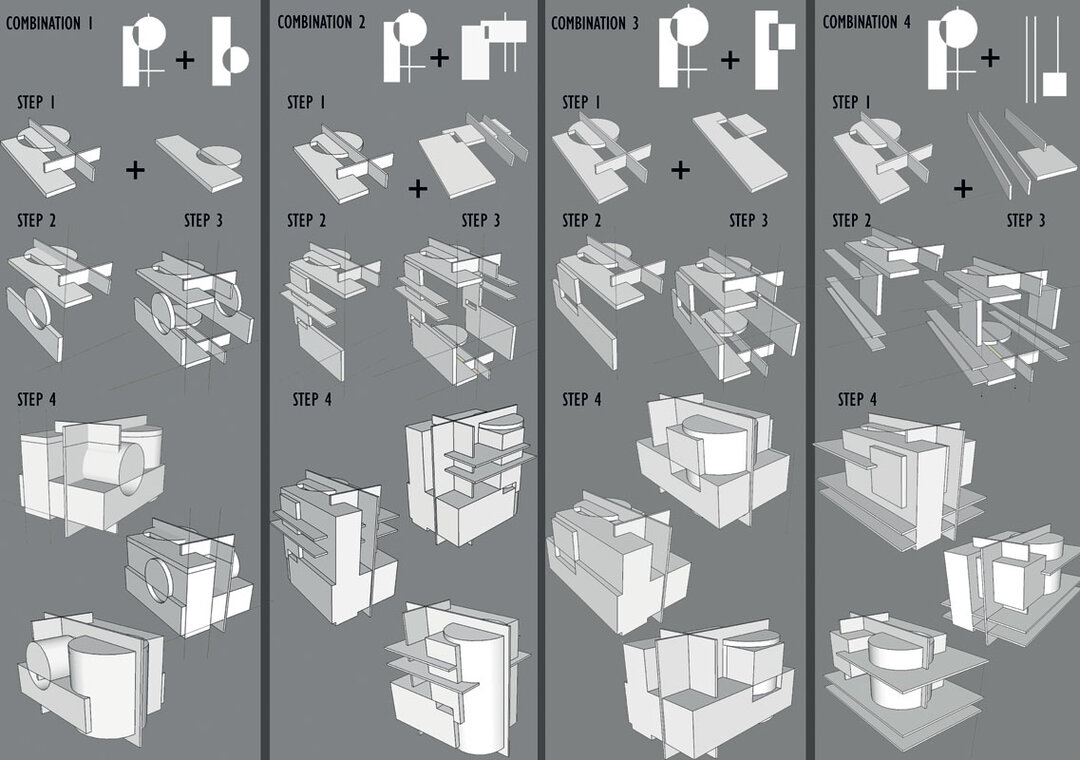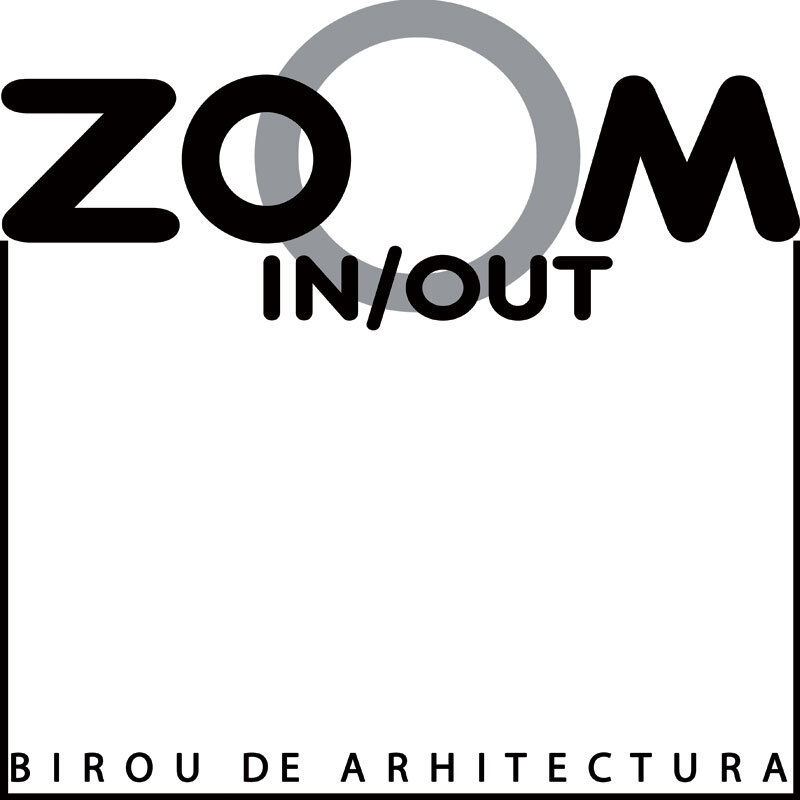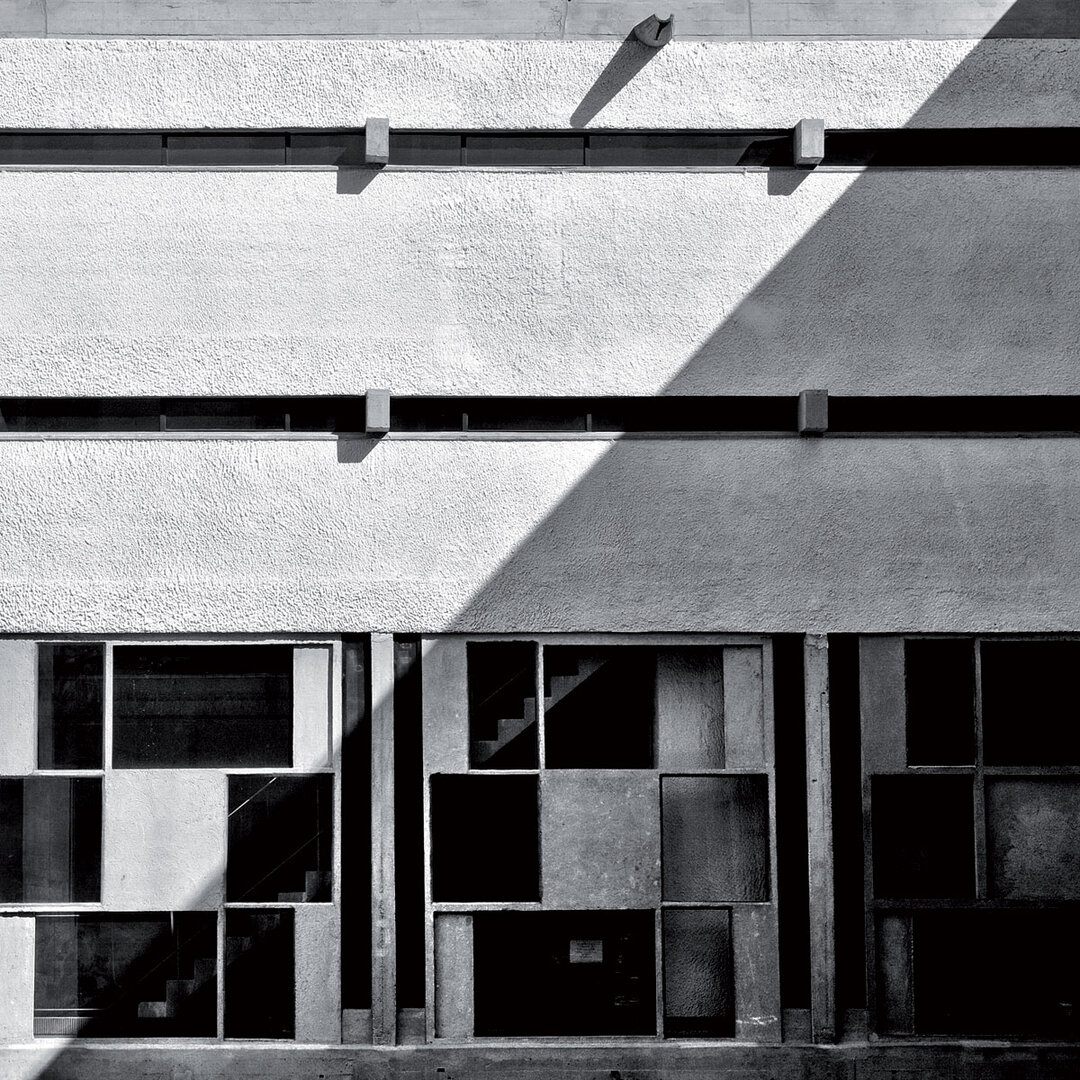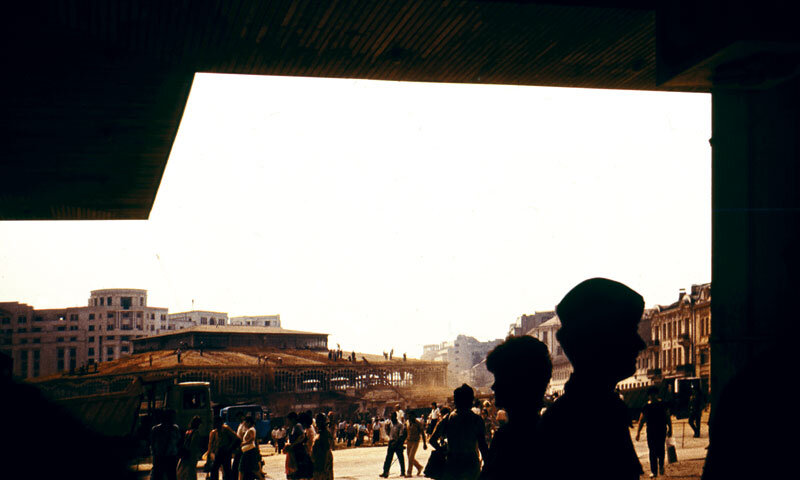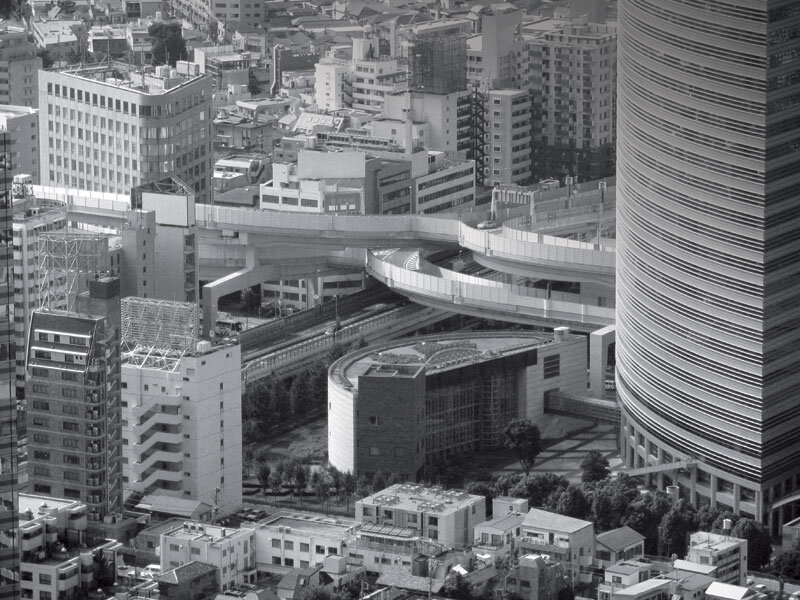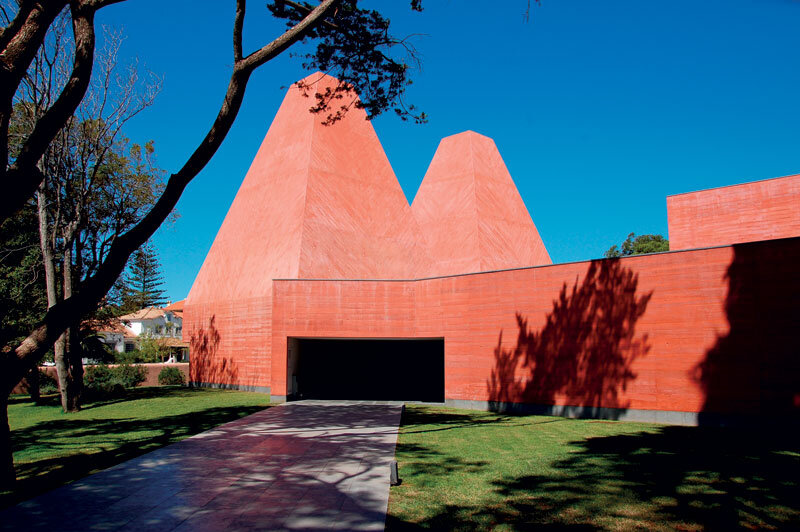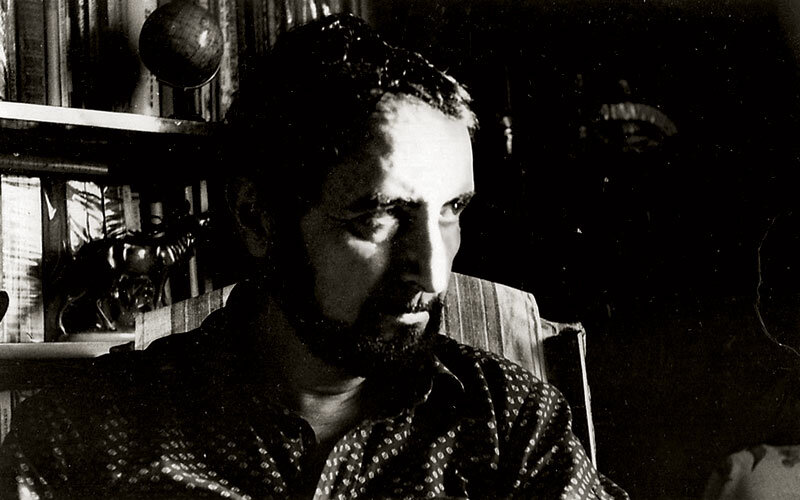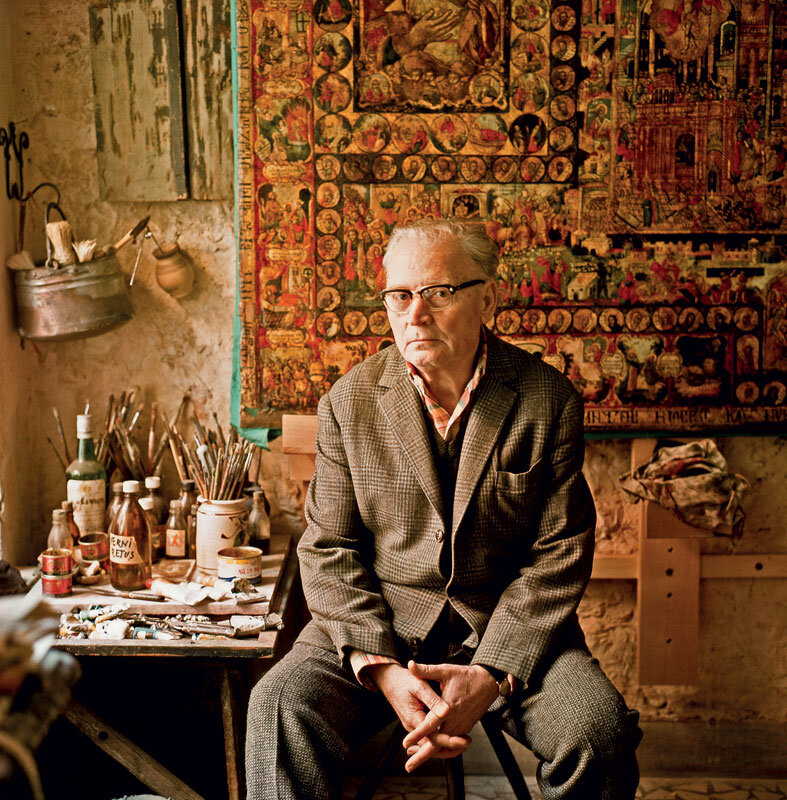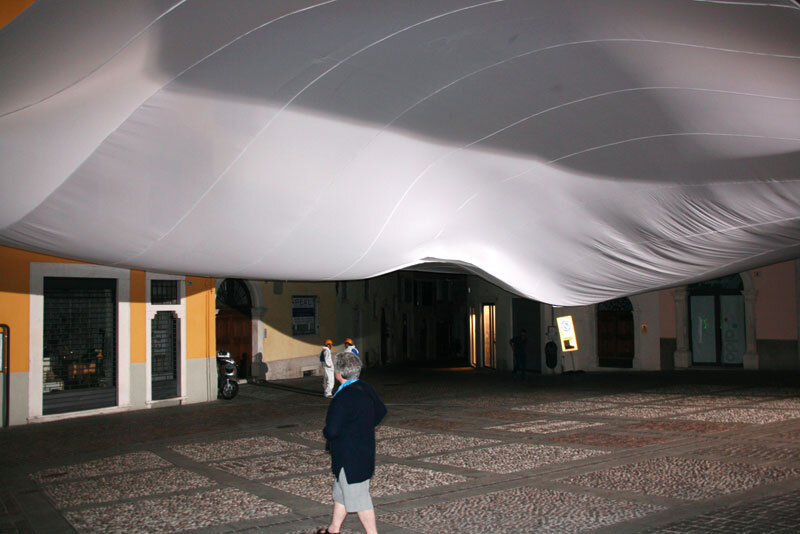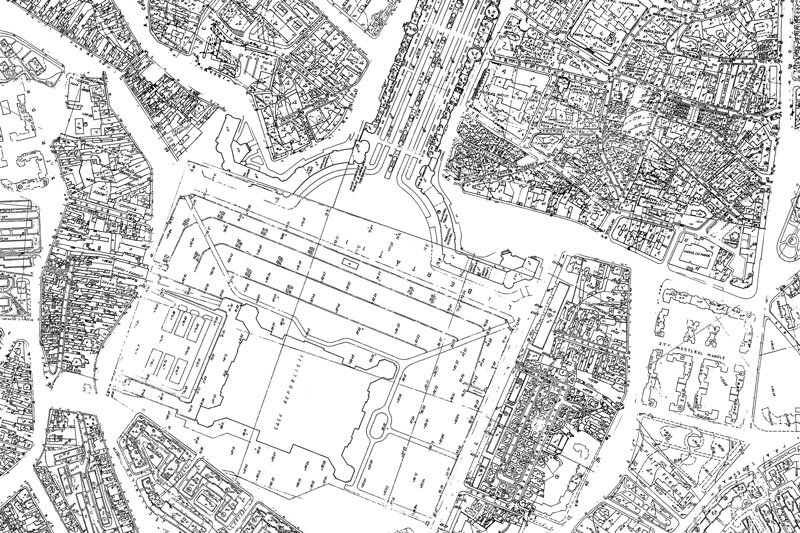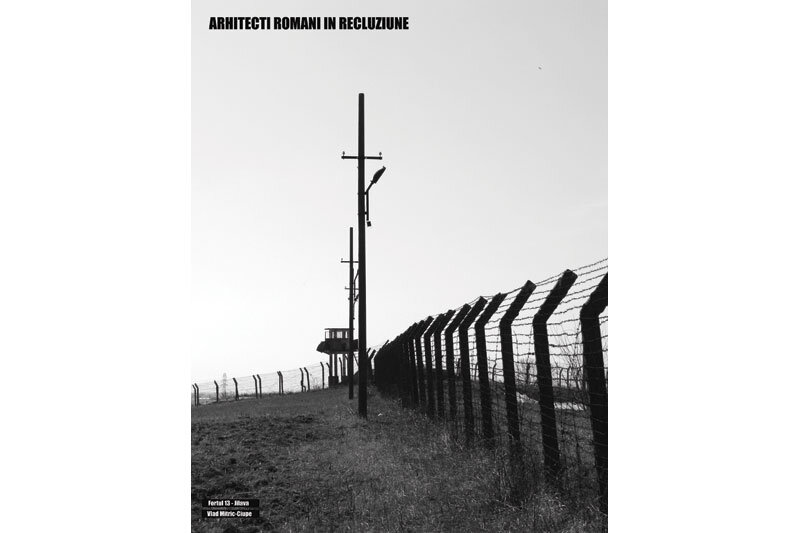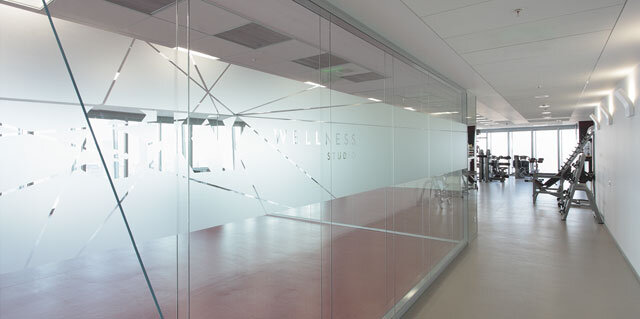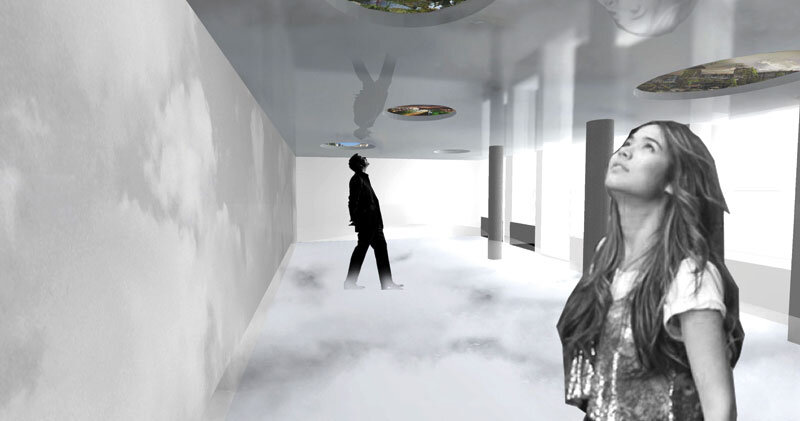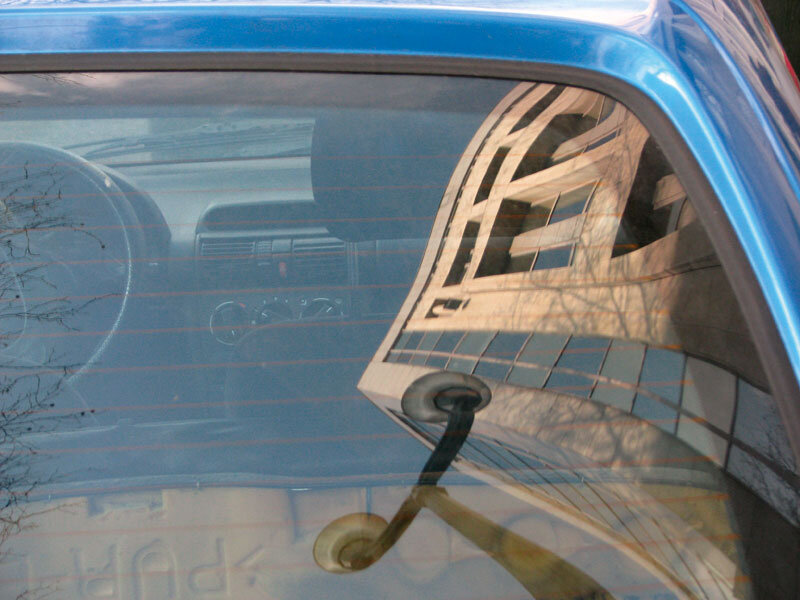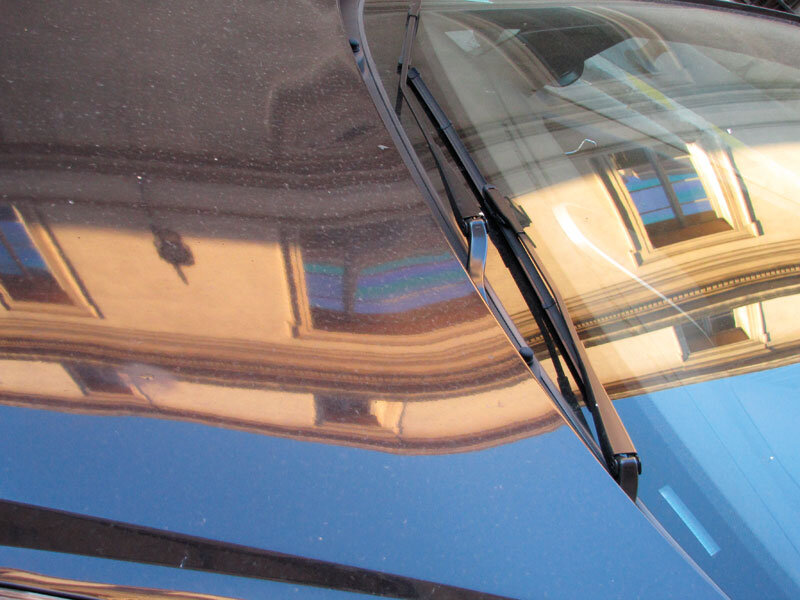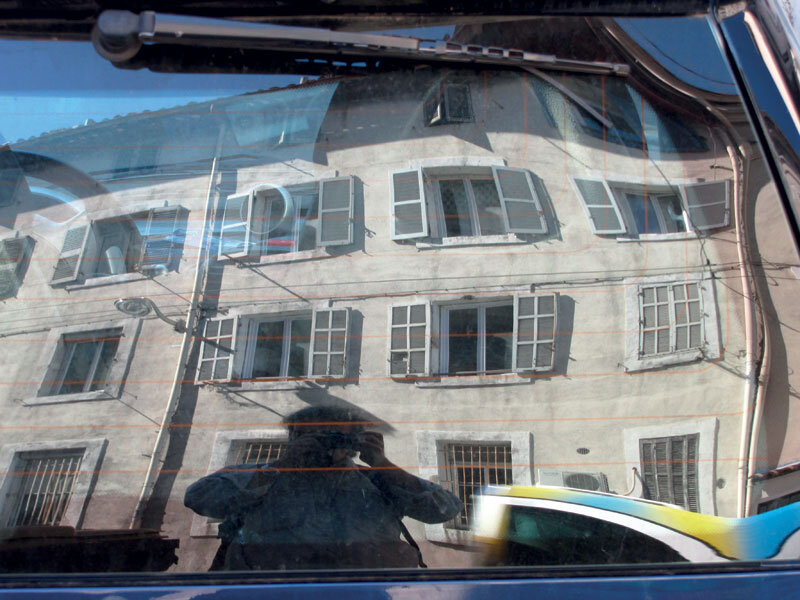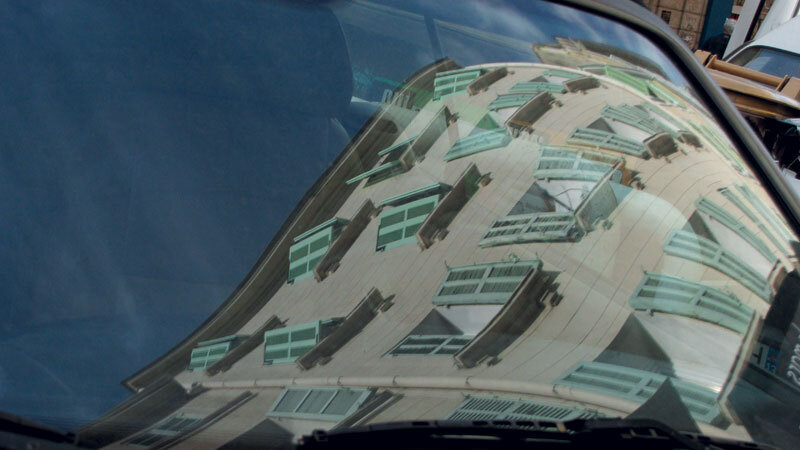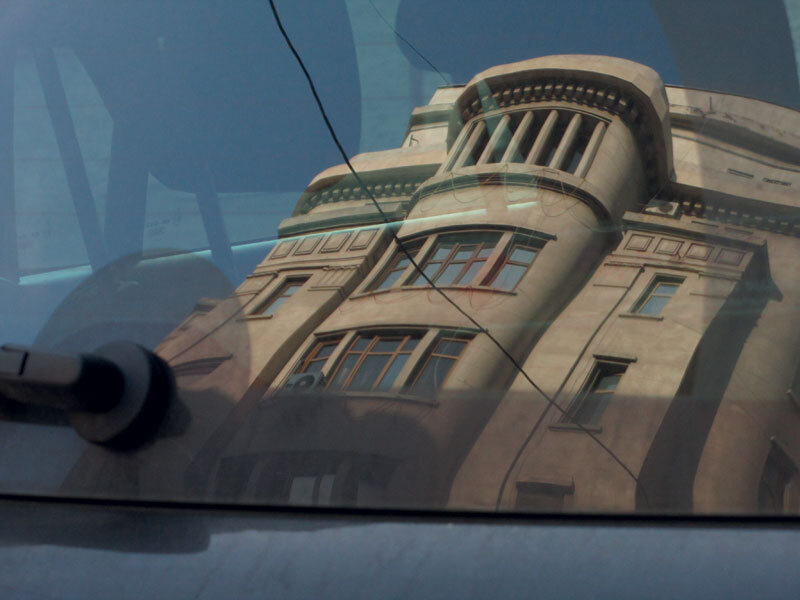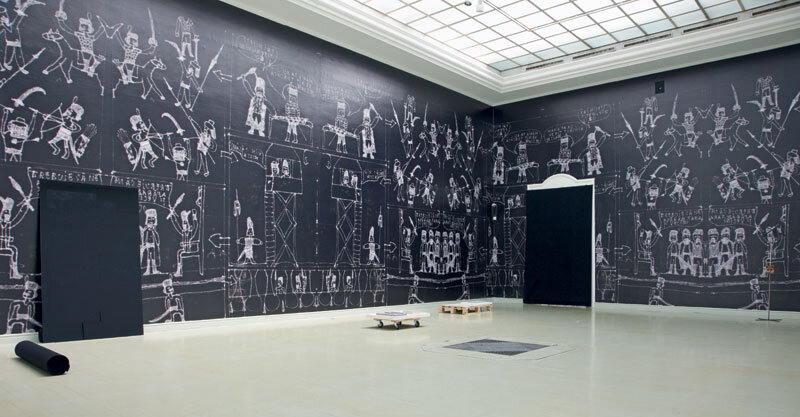
(con)course of surroundings
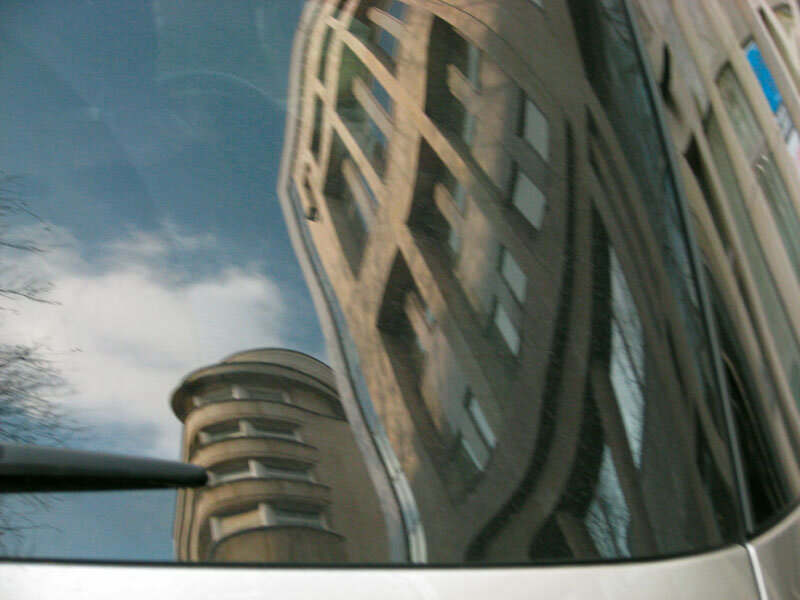
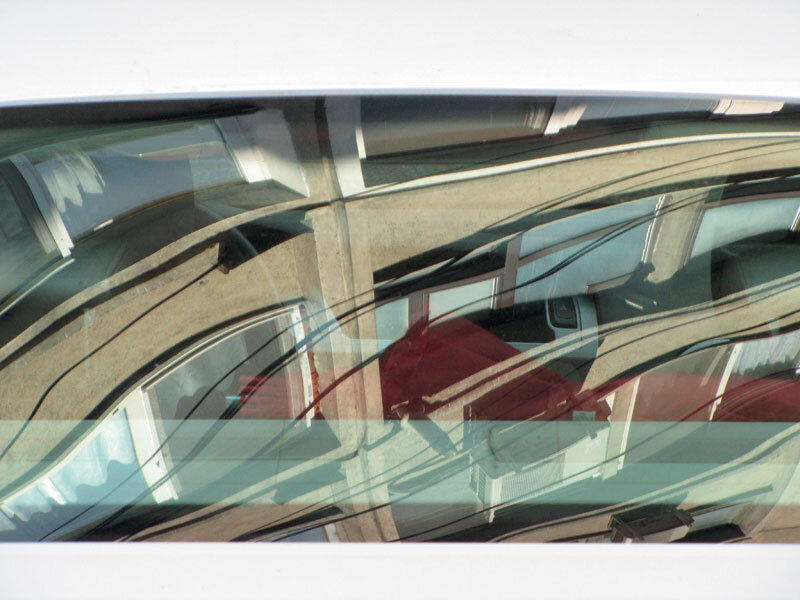
A Pun on Vision
| We walk around the city we live in with our eyes down. We know it (it seems to us). However, otherwise, in the Principalities at least, we risk twisting our ankle. In foreign cities we walk with our eyes on our toes - at the people, at the signposts, at the laundry lying between balconies, at the caryatids shading their foreheads, at the fire escapes, at the water tanks on New York rooftops and skyscraper tops, at the giriments, arches, capitals, gables, gables, anchorings, cornices and gargoyles. After a few hours, we crane our necks and look, again, at the people and the street. A panorama doesn't fit in a picture postcard. Either detail or perspective is lost, a periphery remains - the handkerchief-sized outline of memories, a visual aide-memoire. What is needed is a concept that preserves both the three-dimensionality and the ankles; a kind of photography that does not produce pictures. Which preserves what (otherwise) remains (of) place. A solution for visual notes is the collection of recurring details (seriality is the basic principle of photography, before composition): architectural orders, urban furniture objects, observations on differences; constant points of view; geometries, structures, textures; local colors and color, elements of coloratura, etc. Reflection is one of the (countless) possibilities: the city is reflected in water, in glass curtains, in puddles, in any fortuitous mirror, from the chrome-plated cover to the polished surface. The experiment is simple - nothing very new; just the detail, for the initiated, learned from an architect: solid glass still "flows". From Narcissus loving his own walk, to Alice dreaming enormously, from the baroque to the techniques that distinguish the work from the artifact, the mirror has a history - which, curiously, unlike other generative techniques, photographers have rarely pursued "in series", though it is only (photographically) expressive (otherwise it remains picturesque singularity): in homogeneous strings, in visual paradigm. Reflections are not just the morphology of light repeated in depth, where the "here" overlaps and merges with the "there". The grains of the image sinter, the shapes are laminated, a damascened architecture is obtained. Geometry is disorganized, transparency is multiplied, planes cleave and collapse, edges take on organic forms, like wave fronts, surfaces are fringed, details lose their individuality, objects change position and become bizarre, we perceive unmoving forms as phases in a reverberation that follows the movement of the eye, of shadows - a dance. It's a quasi-automatic painting. An analog optical filter, with simple adjustment, by rotating or in passing, with fine pitch; as productive as a digital application; with iconographic reference to (all) the classical avant-garde: impressionism, futurism, cubism, surrealism, up to now, with their hermeneutics and all. The photographed reflection connects the city to the kaleidoscope. I place the city in the slanted and curved windshields of cars parked in the street. I restore its volumes in the lens, I combine the porte-bonnheur hanging from the rear-view mirror and the serial kitsch of visual mechanics applied to the urban body, in which the shadow occasionally wanders of the photographer. Optical aberrations stylize the culture of place in history, can retouch the traces of time, recover details lost in the tide of impressions, can even predict destruction and construction. As with any optical illusion, it invites a few seconds of extra attention. While not exactly a Copernican revolution in photography, it is the result of a personal rebellion against the platitude of memory. (Amsterdam, Barbate, Bucharest, Brussels, Düsseldorf, London, Madrid, Marseilles, New York, Timisoara, 2008-2012) |
| We look at our shoes as we stroll through our home-city. We are familiar with it (presumably). In fact, at least on Wallachian streets, whover doesn't risks a sprained ankle. In foreign cities we look up and around - at people, at road signs, at laundry hanging out between balconies, at caryatids shading their brow with a hand, at emergency stairs, at the rooftop water tanks and skyscraper tops of New York, at wind vanes, arches, capitals, columns, ledges, gables and gargoyles. A few hours and our neck has had it - we're lowering our gaze at people and the street. A skyline or a cityscape won't fit into a postcard. It misses either the detail or the perspective, it's just a poor paraphrase, a knot around the finger pointing at a weak memory. I needed a concept to keep both my ankles and my recollections unimpaired. A way of taking photos without producing snapshots, a photograph that won't snatch up the likeness of the place. One possible solution for visual note-taking is a collection of recurring details (seriality is the basic principle of photography, ahead of composition): noting variations in architectural patterns and street furniture; choosing a constant perspective; collecting items with a peculiar geometry, structure, texture; recording colors, local color and all manner of colorful trivia. The cityscape gets mirrored in a waterway or in poodles, in glass facades; any plated object or polished surface is a fortuitous mirror. This is indeed a rather trivial experiment - except for a peculiarity an architect let me on about: solid glass panes retain some measure of "fluidity". From a Narcissus in love with his own walk to Alice's lavish dreams, since the Baroque and until contemporary methods of delimiting art from skill, the looking-glass has a rich history which photographers, curiously enough (unlike other generative techniques), don't seem to have been interested in exploiting "serially", although this may well be the only way to turn a picturesque trick, a visual pun, into an expressive paradigm. Reflexions are more than just a particular case of light-fall echo which confounds us about "this side" of things and the "other side". The image grain sinters, shapes get laminated into a damascened architecture. Geometry falters, transparency snowballs, flat surfaces split and slide, edges turn to wavefronts, details lose singularity, things shift and turn weird, we perceive motionless objects as frozen phases of a motion triggered by every movement of the eyes that follow it - a dance of shadows. This is almost like a painting machine. An analogue optical filter operated by every ever so minute change in pitch or pace. As productive as a software plug-in. With unmistakable iconographic ties to all classical avantgardes: Impressionist, Cubist, Surrealist and what have you. Photographing refle-xions bolts the city to a kaleidoscope. So I have been relocating the cityscape in the slan-ted, curved windshields of disorderly parked cars. This reconstructs their volumes, applies the serial kitsch of visual mechanics which may go as deep as trinkets dangling from the rear-view mirror and occasionally to a vague reflection of the photographer, even. Optical distortion turns local culture into history, it may cover up the traces of old age, recover details lost in a flood of impressions and has even predicted destruction - or construction. Just as any optical illusion, it requires a few se-conds more than a quick look. This is all other than a Copernican revolution in photography, but it is my personal act of sedition against a flattening memory. (Amsterdam, Barbate, Bucharest, Brussels, Düsseldorf, London, Madrid, Marseilles, New York, Temeschwar, 2008-2012) |

